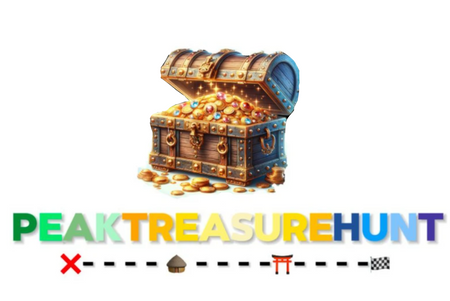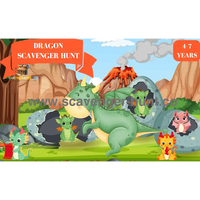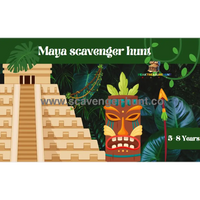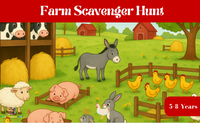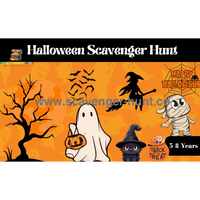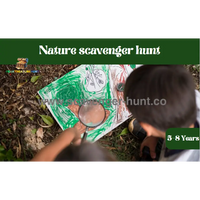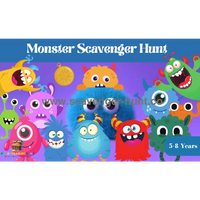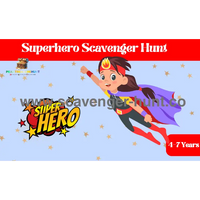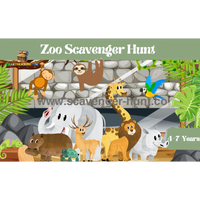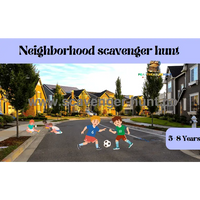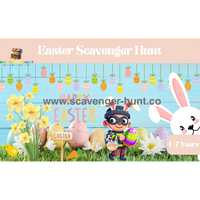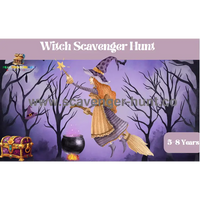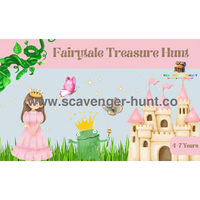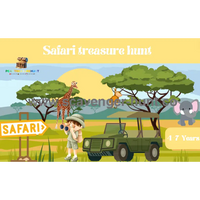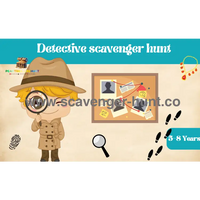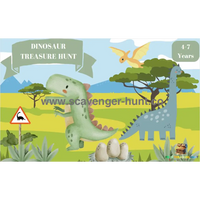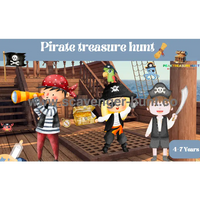😀Unlocking the Joy of Learning: Scavenger Hunts for Kindergarteners
Scavenger hunts are not just games—they're gateways to a world of exploration, learning, and fun for young minds. Specifically tailored for kindergarteners, these activities are designed to ignite curiosity, enhance observational skills, and foster a love for discovery. This article delves into the art of creating and conducting scavenger hunts that are both educational and entertaining for children aged 4 to 12. By integrating key learning objectives with playful exploration, we aim to offer parents and educators a comprehensive guide to making learning an adventure.

The Basics of Scavenger Hunts for Young Explorers
Understanding Scavenger Hunts
A scavenger hunt is a game in which participants seek to gather or complete a list of items or tasks. For kindergarteners, these hunts are simplified to match their developmental stage, focusing on finding objects or fulfilling simple activities based on clues or a list.
Benefits for Kindergarteners
-
Cognitive Development: Enhances problem-solving and critical thinking.
-
Physical Activity: Encourages physical movement and coordination.
-
Social Skills: Promotes teamwork and communication when done in groups.
-
Observational Skills: Sharpens the ability to notice details and patterns.
A scavenger hunt is more than just a playful activity; it's an adventure that sparks curiosity and joy in young minds. Tailored for kindergarteners, these hunts are ingeniously designed to align with their budding developmental stages. The essence of a scavenger hunt lies in the quest to find objects or complete a set of activities, guided by clues or a meticulously crafted list. Unlike the more complex treasure hunts reserved for older adventurers, scavenger hunts for our youngest explorers are simplified, focusing on the sheer delight of discovery and learning through play.
The magic of a scavenger hunt unfolds as it transforms ordinary surroundings into a playground of mysteries waiting to be solved. Whether it's a classroom transformed into a jungle of hidden secrets or a backyard turned into a land of undiscovered treasures, these hunts are crafted to captivate the imagination of kindergarteners. By engaging in this explorative game, children embark on a journey filled with excitement, learning to navigate their way through clues and tasks with eagerness and anticipation.
Benefits for Kindergarteners
Scavenger hunts offer a treasure trove of benefits that extend far beyond the surface level fun. They are a conduit for holistic development, touching upon various aspects of a child's growth. Let's delve into the key benefits:
-
Cognitive Development: At the heart of every scavenger hunt lies a series of problems waiting to be solved. Kindergarteners engage in critical thinking and problem-solving as they decipher clues and strategize their search for items. This mental exercise strengthens cognitive abilities, laying a foundation for lifelong learning and intellectual curiosity.
-
Physical Activity: Scavenger hunts are a disguised form of exercise, prompting kids to move, search, and explore. As they traverse different terrains in search of their next clue or item, they develop fine and gross motor skills. This physical engagement is crucial for their health and coordination, making learning an active rather than passive experience.
-
Social Skills: When conducted in groups, scavenger hunts become a collaborative effort. Children learn the value of teamwork, communication, and sharing in the joy of discovery with others. These social interactions are vital for building empathy, understanding, and cooperative skills, forming the building blocks of healthy relationships.
-
Observational Skills: A keen eye is a young explorer's best tool. Scavenger hunts sharpen observational skills and attention to detail, as children learn to notice patterns, colors, shapes, and nuances in their environment. This enhanced awareness fosters a deeper connection with their surroundings, encouraging mindfulness and appreciation for the little wonders of the world.
Through the lens of fun and games, scavenger hunts for kindergarteners are a powerful educational tool. They blend the thrill of adventure with the joy of learning, nurturing well-rounded individuals equipped with the skills to navigate the complexities of the world. As they embark on these hunts, young explorers are not just searching for items on a list; they are uncovering the building blocks of growth, one clue at a time.
Discover our Complete Scavenger Hunts Collection.


Crafting the Perfect Hunt
Selecting a Theme
A themed scavenger hunt can make the experience more engaging. Popular themes include nature, seasons, colors, shapes, and favorite children's books or characters.
Creating Clues
Clues should be age-appropriate, using simple language or pictures. Rhymes and riddles can add an element of fun, as long as they are easy to understand.
Setting Up
Whether indoors or outdoors, the setup should be safe and suitable for the age group. Ensure that all items are within reach and that there are no potential hazards.
Creating the ideal scavenger hunt for kindergarteners involves a blend of imagination, careful planning, and an understanding of what captivates young minds. This chapter will guide you through selecting a theme, creating age-appropriate clues, and setting up a hunt that is both fun and safe.
Selecting a Theme
Choosing a theme for your scavenger hunt not only adds an element of excitement but also helps in tailoring the experience to the interests and developmental level of the children. Themes can be as broad or as specific as you like, ranging from the wonders of nature to the vibrant world of colors and shapes, or even incorporating elements from beloved children's books and characters.
A well-chosen theme can:
-
Enhance Engagement: A theme related to a current interest or a favorite story can instantly grab a child's attention, making them more enthusiastic about participating.
-
Educational Opportunities: Themes like nature or seasons can be educational, introducing young explorers to new concepts in an enjoyable and interactive way.
-
Ease of Organization: Having a theme can simplify the planning process, guiding your choice of clues, locations, and items to find.
For instance, a nature-themed hunt might involve searching for various leaves, rocks, or flowers, encouraging children to engage with the natural world around them. Alternatively, a hunt based on a popular children's book could have them finding items or solving clues related to the story, deepening their connection to the narrative.
Creating Clues
The heart of any scavenger hunt lies in its clues. For kindergarteners, clues need to be straightforward yet engaging, guiding them towards their goal without causing frustration.
Here are some tips for creating effective clues:
-
Use Simple Language or Pictures: Clues should be easy to understand. For younger children or those not yet reading, pictures can serve as visual cues to guide them to their next location or item.
-
Incorporate Rhymes and Riddles: Adding rhymes and simple riddles can make the hunt more enjoyable. Ensure that these are not too complex and are age-appropriate to keep the game fun and encouraging.
-
Be Creative: Use the theme to inspire your clues. If your hunt is centered around a story, you might use quotes or situations from the book as clues. For a nature hunt, clues could involve descriptions of the items to be found.
Setting Up
The setup of your scavenger hunt should prioritize safety and accessibility, ensuring that all participants can enjoy the game without any risks.
Consider the following when setting up your hunt:
-
Choose a Safe Environment: Whether indoors or outdoors, the area should be secure, with boundaries clearly defined to prevent children from wandering off. Ensure the space is free from potential hazards.
-
Accessibility: Place items within easy reach of the children, considering their height and mobility. Avoid placing objects in areas that might require climbing or reaching into places that could be dangerous.
-
Supervision: Especially important for younger children, ensure that adults are present to supervise the hunt, offering guidance and ensuring safety throughout the activity.
By thoughtfully selecting a theme, creating engaging clues, and carefully setting up your scavenger hunt, you can craft an unforgettable adventure for young explorers. This not only provides them with a fun and stimulating activity but also supports their developmental growth in a safe and nurturing environment.
Discover our Complete Scavenger Hunts Collection.


Innovative Scavenger Hunt Ideas
Nature Explorer
Participants find items from nature, such as leaves, rocks, or flowers, learning about the environment around them.
Alphabet Adventure
Children find objects beginning with each letter of the alphabet, reinforcing their literacy skills.
Color Quest
A hunt focused on finding items of specific colors, enhancing color recognition and sorting skills.
Storybook Journey
Items or tasks are based on a popular children's book, combining reading comprehension with active exploration.
Scavenger hunts have always been a beloved activity for both kids and adults, offering a mix of adventure, learning, and teamwork. The beauty of scavenger hunts lies in their versatility and ability to be adapted to various themes, skills, and environments. In this chapter, we'll explore some innovative scavenger hunt ideas that go beyond the traditional search for items, aiming to make learning an interactive and enjoyable experience.
Nature Explorer
The Nature Explorer scavenger hunt takes participants on an educational journey through the great outdoors. This adventure is designed to increase environmental awareness and appreciation, encouraging explorers to closely observe the world around them. Participants are given a list of natural items to find, such as specific types of leaves, rocks with unique features, or flowers of various colors. Each item on the list is accompanied by a fun fact or a brief description to help hunters learn more about their finds.
Implementation:
-
Location: Choose a safe, accessible outdoor area rich in biodiversity, such as a park, forest, or nature reserve.
-
Equipment: Provide magnifying glasses for a closer look at smaller items and bags for collecting items (encourage the use of reusable bags to promote sustainability).
-
Educational Aspect: Include a small booklet or an app that provides interesting facts about each item to be found, promoting self-learning as participants discover the natural world.
Alphabet Adventure
Alphabet Adventure is a fun and educational scavenger hunt aimed at enhancing literacy skills among children. This hunt challenges kids to find objects that begin with each letter of the alphabet. It's a fantastic way for children to practice their letters, expand their vocabulary, and learn new concepts in a playful setting.
Implementation:
-
Location: This scavenger hunt can be adapted to any setting, from indoors at home or school to outdoors in a garden or playground.
-
Equipment: Participants could use a camera or a notepad to record their finds, encouraging creativity in how they capture each item.
-
Educational Aspect: To reinforce learning, consider pairing each letter with a corresponding word in the scavenger hunt list (e.g., "A for Acorn, B for Ball"). This not only helps with letter recognition but also with word association and vocabulary building.
Color Quest
Color Quest focuses on color recognition and sorting skills, making it perfect for younger children who are learning their colors. In this scavenger hunt, participants search for items that match specific colors provided in their quest list. This simple yet effective game helps children refine their observational skills and learn about the diversity of colors in their environment.
Implementation:
-
Location: Like the Alphabet Adventure, Color Quest is versatile and can be held in various locations.
-
Equipment: Provide each participant with a color chart or colored bags to collect their items, adding an extra layer of sorting to the activity.
-
Educational Aspect: Enhance the learning experience by including items that can be used to teach about shades and tints, such as finding light green and dark green leaves, promoting an understanding of color variations.
Storybook Journey
The Storybook Journey scavenger hunt brings the magic of literature to life, combining reading comprehension with physical activity. This hunt is based on a popular children's book and requires participants to find items or complete tasks that relate to the story. It's a wonderful way to deepen a child's connection to literature and encourage imaginative play.
Implementation:
-
Location: Choose a location that can be easily adapted to the themes of the chosen book. For example, a garden or wooded area could serve as the perfect backdrop for a story set in a magical forest.
-
Equipment: Provide a map or clues that guide participants through their journey, mirroring the plot or challenges faced by the characters in the book.
-
Educational Aspect: Include questions or tasks related to the story at each checkpoint, encouraging participants to recall details from the book and apply their knowledge to solve challenges.
In conclusion, these innovative scavenger hunt ideas offer a fresh take on a classic activity, providing educational benefits while ensuring participants are engaged and entertained. By incorporating elements of learning into the fun of a scavenger hunt, organizers can create memorable experiences that encourage curiosity, teamwork, and a love for discovery.
Discover our Complete Scavenger Hunts Collection.


Enhancing the Experience
Incorporating Technology
Simple digital cameras or smartphones can be used for photo scavenger hunts, allowing children to capture what they find.
Reward System
Small rewards or certificates can motivate participation and celebrate achievements, emphasizing the joy of discovery over competition.
Parent and Educator Involvement
Adults can guide children, provide hints, and ensure safety, making the scavenger hunt a bonding experience.
In the realm of educational and recreational activities, scavenger hunts stand out for their versatility and ability to engage participants of all ages. However, the traditional format of scavenger hunts can be greatly enhanced by incorporating modern technology, implementing a reward system, and involving parents and educators in the process. These enhancements not only make the activity more engaging but also increase its educational value, making it a more enriching experience for everyone involved.
Incorporating Technology
In an era where technology is ever-present in our lives, incorporating digital tools into scavenger hunts can transform the traditional experience into a modern adventure. The use of simple digital cameras or smartphones, for example, allows participants to engage in photo scavenger hunts. This adaptation not only adds an exciting twist to the hunt but also encourages children to observe their surroundings more closely. As they look for specific items to photograph, they learn to pay attention to details and to see the world through a more focused lens.
Moreover, technology can facilitate the creation of interactive scavenger hunts through the use of QR codes or augmented reality (AR) apps. QR codes can be placed at various locations, leading participants to clues or tasks when scanned. Similarly, AR apps can bring scavenger hunts to life by overlaying digital information onto the physical world, making the hunt an immersive experience. These technological enhancements not only make scavenger hunts more engaging but also introduce children to basic digital literacy skills.
Reward System
Motivation plays a crucial role in the engagement and enjoyment of scavenger hunts. Implementing a reward system can significantly enhance the experience by providing participants with tangible goals. Small rewards or certificates awarded at the end of the hunt celebrate the participants' achievements and emphasize the joy of discovery over the competitive aspects of the hunt. This approach encourages participation from all children, regardless of their skill level, and fosters a positive environment where effort is recognized and rewarded.
The rewards need not be extravagant; simple tokens of achievement or certificates of completion can have a profound impact on participants' sense of accomplishment. Additionally, incorporating elements of surprise in the rewards can heighten the excitement and make the scavenger hunt an eagerly anticipated event.
Parent and Educator Involvement
The involvement of parents and educators is vital in maximizing the educational potential of scavenger hunts. Their participation can transform the hunt from a simple game into a meaningful learning experience. Adults can guide children through the hunt, providing hints and ensuring safety, which not only makes the activity more enjoyable but also fosters a sense of security and support.
Parents and educators can also use the scavenger hunt as an opportunity to teach children about various subjects related to the items or tasks involved. For instance, finding items from nature can lead to discussions about the environment, while an alphabet adventure can reinforce literacy skills. This direct involvement makes the scavenger hunt a bonding experience, strengthening relationships and facilitating learning in a fun and engaging way.
In conclusion, enhancing the scavenger hunt experience through the incorporation of technology, a reward system, and the involvement of parents and educators can transform this traditional activity into an innovative and enriching adventure. By embracing these enhancements, participants can enjoy a more engaging, educational, and memorable scavenger hunt that goes beyond mere entertainment, fostering a lifelong love for discovery and learning.
Discover our Complete Scavenger Hunts Collection.


Overcoming Challenges
Adapting for Different Abilities
Scavenger hunts should be inclusive, with modifications as needed to ensure that every child can participate and enjoy the experience.
Weather Contingencies
Have a plan for bad weather, such as moving the hunt indoors or having weather-appropriate gear ready.
Keeping Engagement High
Vary the types of hunts and themes to keep children interested and looking forward to new adventures.
Scavenger hunts, with their dynamic and engaging nature, offer unique opportunities for learning, exploration, and fun. However, organizers and participants can sometimes face challenges that may hinder the smooth execution and enjoyment of these activities. By anticipating and addressing these challenges, such as adapting for different abilities, preparing for weather contingencies, and keeping engagement high, scavenger hunts can be made more inclusive, flexible, and continuously exciting.
Adapting for Different Abilities
One of the most significant challenges in organizing scavenger hunts is ensuring inclusivity so that children of all abilities can participate and enjoy the experience. It is essential to adapt activities to accommodate a wide range of physical, cognitive, and sensory abilities. This might involve modifying the complexity of clues for younger children or those with learning difficulties, ensuring physical tasks are accessible to children with mobility issues, or incorporating sensory-friendly elements for participants who are sensitive to overstimulation.
For example, clues can be provided in both written and pictorial forms to cater to non-readers and visual learners. Tasks that require physical activity can have alternative options that allow children who may not be able to run or climb to still participate fully. By thoughtfully adapting scavenger hunts, organizers can foster an environment of inclusion and equality, where every child feels valued and capable of contributing to the adventure.
Weather Contingencies
Weather can be unpredictable and can significantly impact outdoor scavenger hunts. To prevent weather from dampening the spirits of the participants, it is crucial to have contingency plans in place. This may include moving the hunt indoors, where elements of the environment can be simulated, or choosing locations that offer shelter and can accommodate the hunt despite bad weather. For example, museums, libraries, or community centers can serve as excellent venues for indoor scavenger hunts.
Alternatively, organizers can prepare weather-appropriate gear, such as raincoats, umbrellas, or sun hats, to ensure that the hunt can proceed comfortably. Informing participants and parents about the potential for weather changes and advising on appropriate attire can also help manage expectations and ensure that everyone is prepared for any situation.
Keeping Engagement High
To maintain interest and keep participants eagerly anticipating new adventures, it is vital to vary the types of hunts and themes. Repetition can lead to boredom, reducing the effectiveness and enjoyment of scavenger hunts. Incorporating different themes, such as nature exploration, historical mysteries, or cultural discoveries, can provide fresh and exciting experiences for participants. Additionally, varying the format of the hunts, such as incorporating technology, using puzzles or riddles, or integrating team-based challenges, can cater to different interests and learning styles.
Organizers can also engage participants by involving them in the planning process, allowing them to suggest themes or items to hunt for. This not only makes the experience more personal but also gives children a sense of ownership and investment in the activity. Celebrating the completion of each hunt with a small ceremony or recognition can also boost morale and create a sense of accomplishment, encouraging participants to look forward to future scavenger hunts.
In conclusion, by effectively addressing the challenges of adapting for different abilities, preparing for weather contingencies, and keeping engagement high, scavenger hunts can be transformed into enriching and enjoyable experiences for all participants. Overcoming these challenges requires creativity, flexibility, and a commitment to inclusivity, ensuring that scavenger hunts continue to be a beloved activity for children of all backgrounds and abilities.
Discover our Complete Scavenger Hunts Collection.


Frequently Asked Questions
1. How can I make a scavenger hunt educational?
Focus on incorporating elements that align with learning goals, such as counting, identifying colors, shapes, or letters, and solving simple puzzles.
2. What safety precautions should I take during an outdoor scavenger hunt?
Ensure the area is safe for children, supervise them closely, and prepare for any weather conditions. Also, keep the hunt contained to a defined area.
3. How do I keep all the children engaged during the hunt?
Create tasks that cater to different interests and abilities, and consider having children work in pairs or small teams to foster collaboration.
4. Can scavenger hunts be adapted for indoor play?
Absolutely. Indoor hunts can focus on household objects, clues related to stories or themes, and even tasks that can be completed in a confined space.
5. How often should I organize scavenger hunts for my child?
This depends on your child's interest and schedule. Scavenger hunts can be a special occasion activity or a regular part of playtime, adjusted to fit into your family's routine.
Conclusion
Scavenger hunts for kindergarteners offer a unique blend of fun, learning, and adventure. By carefully planning these activities, parents and educators can provide meaningful experiences that promote a range of developmental skills. Whether exploring the great outdoors or the corners of their home, children can embark on journeys that stimulate their curiosity, creativity, and love for discovery.
Scavenger hunts stand out as a remarkable tool in the arsenal of educational and recreational activities available to kindergarteners. These adventures offer more than just a playful escape; they serve as a conduit for learning, exploration, and the development of a myriad of skills. By thoughtfully designing scavenger hunts, parents and educators unlock opportunities for children to engage with their environment in a manner that is both meaningful and exhilarating.
The essence of scavenger hunts lies in their versatility. Whether set in the expanse of nature, within the bounds of a classroom, or the cozy corners of a home, each hunt is a gateway to a new world of discovery. It encourages kindergarteners to observe, question, and interact with their surroundings, turning every leaf, rock, or household object into a potential treasure. This process of exploration is not just about finding items on a list; it's about igniting the innate curiosity that resides within every child, prompting them to see the wonder in the world around them.
Moreover, scavenger hunts are inherently adaptable, capable of being molded to fit a wide range of themes, subjects, and learning objectives. They can be tailored to enhance literacy, foster an appreciation for nature, encourage physical activity, or even introduce basic problem-solving skills. This adaptability makes scavenger hunts an invaluable educational strategy, one that can complement traditional learning methods and provide a dynamic setting for children to apply and expand their knowledge.
The benefits of participating in scavenger hunts extend beyond the acquisition of knowledge. These activities promote a range of developmental skills, including social interaction, teamwork, and communication. As children collaborate to decipher clues and celebrate their discoveries, they learn the importance of sharing ideas, listening to others, and working together towards a common goal. Additionally, the physical aspect of scavenger hunts encourages active play, which is crucial for the development of fine and gross motor skills.
Parents and educators play a pivotal role in maximizing the potential of scavenger hunts. Their involvement is key to creating a safe, supportive, and enriching environment where children feel encouraged to explore and learn. By participating alongside the children, adults can guide the experience, offering just enough support to keep the children engaged while allowing them the freedom to lead their own discovery process. This balance of guidance and independence is crucial for fostering a sense of achievement and self-confidence in young learners.
In conclusion, scavenger hunts offer a unique and powerful means of blending fun, learning, and adventure for kindergarteners. These activities are not just games; they are experiences that shape young minds, instill a love for discovery, and lay the foundation for lifelong learning. By carefully planning and executing scavenger hunts, parents and educators can provide children with invaluable opportunities to explore, grow, and thrive. As we look towards the future of education, the potential of scavenger hunts to enrich the learning experience is both exciting and boundless, promising a journey of discovery that is as limitless as the imagination of the children who embark on it.
Discover our Complete Scavenger Hunts Collection.




